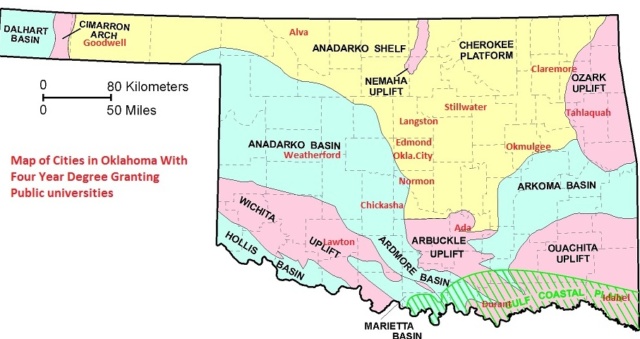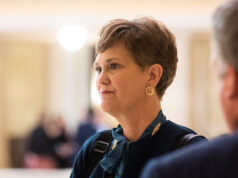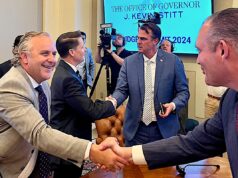

State appropriations for higher education in Oklahoma have dwindled in recent years. A recent study from Illinois State University’s joint Grapevine project shows Oklahoma is now the lowest-ranked in state appropriations following a reduction of 17.8 percent in the past five years. Although the University of Oklahoma and Oklahoma State University are better positioned to cushion themselves from reduced state funding, smaller schools find themselves taking drastic measures to deal with the latest budget realities.
Following a year when the Oklahoma State Regents for Higher Education received a 16-percent cut in state appropriations, the state’s higher education system took on an additional 6 percent reduction for the current fiscal year. The Fiscal Year 2018 appropriation of $774 million was down from the $810 million allocated this past year and far less than the requested $958 million.
Staff positions remain unfilled, stressed under budget cuts
The regional universities and two-year colleges have been scrambling during the past month to address the budget reductions. Many of them are focused on leaving vacant staff positions unfilled as one way to keep costs down.

Patti Neuhold, vice president of finance at the University of Central Oklahoma, said the ongoing state appropriation reductions cause a two-fold problem for the school: Not only are some employees losing their jobs, but those who remain at the school are taking on additional workloads for at least a second-straight year.
“We’ve got people who have become conditioned to accepting more work,” Neuhold said. “That’s unfair.”
At UCO, cutting support-staff positions will be a focus. Neuhold said there are adviser positions that are so thinned out that they just can’t be replaced. With one academic counselor per 1,500 students, Neuhold said the school is already well below the national average.
UCO isn’t the only school having to deal with the cuts. Northeastern Oklahoma State University is eliminating 26 filled and unfilled positions. Northern Oklahoma College decided to get rid of 42 part-time positions and 41 student-employment positions. At Southwestern Oklahoma State University, the decision was to leave some vacant positions unfilled, make additional cuts to the travel budget and reduce equipment purchases.
Smaller schools fear tuition gap closing
While all the state’s public universities are feeling the pinch, the regional universities and two-year colleges have been taking on cuts that are affecting their ability to remain competitive. Burgess said the smaller institutions fear losing the benefit of being cheaper, having smaller class sizes and offering lower student-to-faculty ratios.
“You get to a point where if there’s a lesser gap in tuition rates, why would a student go to a regional university instead of an OU or an OSU?” Burgess said.
With state appropriations on the decline, universities and colleges are seeking tuition and fee increases to compensate. The NOC board, for example, approved a 5.5 percent tuition increase for the upcoming school year. Likewise, the State Regents for Higher Education approved a 5.3-percent increase in tuition for the entire higher education system last month.

“We understand the financial sacrifice many of our students and their families make in order to seek a higher education, and raising the cost of tuition is not a decision that the college takes lightly; however, this increase will assist in preserving the quality of the student experience at Northern,” said NOC president Cheryl Evans.
‘Further and further behind’
Neuhold said the reduction in employees, purchases and travel is the reality of the budget cuts, but she agreed that students could potentially suffer the most.
“We are further and further behind — if enrollment held steady and tuition held steady, we would still be two to three million (dollars) behind every year,” Neuhold said. “I think we are all feeling the pinch. We are burdening our students. The state has burdened our students with covering a crazy amount they didn’t have to cover before.”
Ben Hardcastle, vice president of university relations, said one of the other concerns at NEOSU was that the budget cuts might make the university a less appealing workplace for the faculty and staff.
“Our staff is very resilient and dedicated, but our lower salaries are making it difficult for many talented professionals to afford to stay at a university they are so dedicated to,” said Hardcastle.
Conservative group in favor of more cuts
Not everyone believes the higher education system has taken enough of a cut. The Oklahoma Council of Public Affairs has long advocated for making cuts to the higher education budget, including a proposal this year to eliminate at least 10 percent of non-essential staff at all public universities and colleges within the state. Jonathan Small, OCPA president, said the higher education system has routinely found a way to excessively spend money.
“When they get more money, they spend more money,” Small said.
With Oklahoma’s fortunes tied to a struggling oil and gas industry, the state has found itself with decreasing revenue for the past few years. The tax revenue available for state appropriations has been on the decline since Fiscal Year 2015. In addition to the state facing budget challenges, Oklahoma families have felt pressure stemming from increased unemployment and fewer jobs. Small said while families continue to struggle with keeping up with their bills, the higher education system continues to grow and expand as if the state were thriving in a surplus economy.
“The problem to a large degree is that the higher education structure hasn’t adapted to what is going on elsewhere,” Small said. “Higher ed seems to be moving in the opposite direction.”
Small said one of the counter-trends involves former politicians being given non-essential jobs at state universities. He pointed to OU’s hiring of former state senators Jonathan Nichols as a $175,000-a-year lobbyist and Jabar Shumate as a $225,000-a-year diversity czar as examples of former elected officials finding new but lucrative careers within the higher education system. Noting that higher education chancellor Glen D. Johnson – a former Oklahoma Speaker of the House – receives a higher salary than U.S. President Donald Trump, Small said higher education was turning out to be a destination for retired politicians.
“The parachute for pols is higher ed in Oklahoma,” Small said. “I don’t think that can be overlooked.”
Oklahoma higher ed’ ranks fifth in affordability
Higher education officials insist they are doing all they can to keep up with the declining state appropriations while maintaining affordable tuition for those who enroll. The numbers seem to back them up when compared to their counterparts in other states. The U.S. Chamber of Commerce shows Oklahoma’s system as the fifth-most affordable in the nation, while the National Center for Education Statistics has Oklahoma ranking third-lowest in terms of average cost at a four-year university.




















